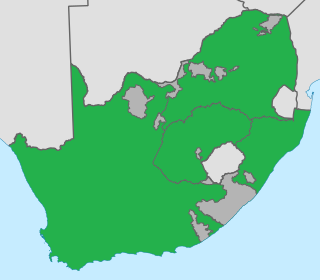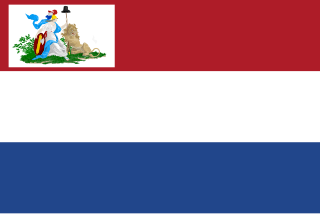A constitutional amendment is a modification of the constitution of a polity, organization or other type of entity. Amendments are often interwoven into the relevant sections of an existing constitution, directly altering the text. Conversely, they can be appended to the constitution as supplemental additions (codicils), thus changing the frame of government without altering the existing text of the document.
The Sixth Amendment of the Constitution (Adoption) Act 1979 is an amendment to the Constitution of Ireland ensured that certain adoption orders would not be found to be unconstitutional because they had not been made by a court. It was approved by referendum on 5 July 1979 and signed into law on 3 August 1979.
Amendments to the Constitution of Ireland are only possible by way of referendum. A proposal to amend the Constitution of Ireland must first be approved by both Houses of the Oireachtas (parliament), then submitted to a referendum, and finally signed into law by the President of Ireland. Since the constitution entered into force on 29 December 1937, there have been 35 amendments to the constitution.
There are three types of elections in Denmark: elections to the national parliament, local elections and elections to the European Parliament. Referendums may also be called to consult the Danish citizenry directly on an issue of national concern.

Referendums in Australia are polls held in Australia to approve parliament-proposed changes to the Constitution of Australia or to the constitutions of states and territories. Polls conducted on non-constitutional issues are usually referred to as plebiscites.
A four-part referendum was held in Ukraine on 16 April 2000. The referendum was called by President Leonid Kuchma, and asked voters whether they approved of four amendments to the constitution that would increase the powers of the President and introduce an upper chamber.

Isaac Jan Alexander Gogel was the first minister of finance of the Batavian Republic and the Kingdom of Holland. He married Catharina van Hasselt in 1800, and had three children.

A referendum on a new constitution was held in South Africa on 2 November 1983 in which the white population was given the opportunity to approve or reject the Constitution of 1983. This constitution introduced the Tricameral Parliament, in which coloured and Indian South Africans would be represented in separate parliamentary chambers, while black South Africans would remain unrepresented. The referendum passed with 66.3% of voters voting "Yes"; consequently the new constitution came into force on 3 September 1984.
A constitutional and electoral age referendum was held in Denmark on 28 May 1953. Both proposals were approved by voters, leading to both a new constitution taking effect on 5 June, and the electoral age being lowered from 25 to 23 years, also starting on 5 June. Voter turnout was 59.1% for the constitution question and 57.1% for the voting age question.
A referendum on the constitution of the Batavian Republic was held on August 8, 1797. The draft constitution was rejected, eventually culminating in a coup d'état.

A referendum on a draft constitution was held in the Cayman Islands on 20 May 2009 alongside general elections. The new constitution was approved by 63% of voters, and by the Privy Council on 10 June.

Proposition 7 of 1911 was an amendment of the Constitution of California that introduced, for the first time, the initiative and the optional referendum. Prior to 1911 the only form of direct democracy in California was the compulsory referendum.
A constitutional referendum was held in the Batavian Republic on 6 October 1801. After a previous referendum in 1798 resulted in a new constitution being approved, the French were not satisfied with this constitution, and under their influence a new constitution was written.
A constitutional referendum was held in the Batavian Republic in 1798. After a previous referendum in 1797 resulted in a coup d'état, a new constitution was written. On 23 April 1798, a referendum was held about the new constitution. Only opponents of the federalists were allowed to vote.

The current Constitution of Suriname was adopted on 30 September 1987, following a referendum. It marked the return to democracy after the Bouterse military dictatorship of the 1980s.

A constitutional referendum regarding the Prince’s powers was held in Liechtenstein on 14 March 2003. The referendum had two questions; a "Princely Initiative" and a "Constitution Peace Initiative". The first question passed with 64.32% in favour and the second question was rejected by 83.44% of voters.

A constitutional referendum was held in Poland on 25 May 1997. Voters were asked whether they approved of a new constitution. It was narrowly approved, with 53.5% voting in favour. Voter turnout was just 42.9%. Although the 1995 Referendum Act stated that a 50% turnout was required to validate the referendum, the Supreme Court ruled on 15 July that the constitution could be introduced.
A referendum is a direct vote in which an entire electorate is asked to either accept or reject a particular proposal. This article summarises referendum laws and practice in various countries.

In the Netherlands, from the entry into force of the Advisory Referendum Act on 1 July 2015, until its repeal on 18 February 2018, most types of primary laws could be subjected to a suspensory, non-binding referendum if requested shortly after royal assent and subsequent proclamation. If a law was rejected by more than half of the votes cast, with a mandatory turnout of at least 30%, its entry into force was be suspended indefinitely and a follow-up law had to be enacted that either repealed the law or provided for its entry into force.










